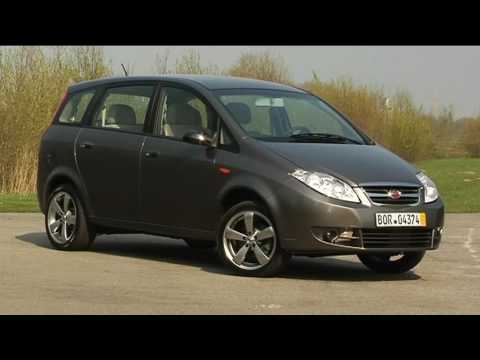#EuroNCAP
Automakers Sticking with Screens Are Going to Receive Bad Safety Ratings in Europe
Updated European safety certifications may discourage global automakers from leaning so heavily upon touch controls in the future. While not a formal government regulator, the European New Car Assessment Programme (NCAP) is extremely influential in a manner similar to the United States’ Insurance Institute for Highway Safety (IIHS). These are the entities testing the crash worthiness of modern automobiles, or bench-marking industry safety standards, and Euro NCAP has elected to make distracted driving a major issue moving forward. By 2026, any vehicles sold within the European market will need to include physical controls to be deemed truly safe.
Are You Safer In A Geely Emgrand, A Fiat Panda, A Jeep Grand Cherokee Or A Jaguar XF?
Ask a Westerner what he or she thinks of Chinese cars, and the answer will be predictable: unsafe. Thanks to China’s slower crash test speeds and low-cost manufacturing, Chinese cars have largely not met global safety standards, and Youtube videos have long cemented the impression that Chinese cars are fundamentally unsafe. But as with any growing industry, the Chinese are stepping their game up. Far from a global embarrassment, the latest Geely Emgrand even earned four stars in Euro-NCAP testing. That’s not enough to erase China’s reputation for unsafe cars, as five star performances are rapidly becoming the standard in Europe. But it is enough to match the achievements of other modern European cars, most notably the updated Fiat Panda. Though the Panda is considerably smaller than the Emgrand, and therefore is at something of a safety disadvantage, the price difference between the two cars is likely to be negligible, making the comparison quite interesting. Meanwhile, there are other four-star (or should we call it “Chinese Quality”?) cars in NCAP’s latest round of testing, including the considerably more expensive Jaguar XF and Jeep Grand Cherokee. Check out the reports for the XF, Panda and Emgrand in the gallery below, or surf on over to Autobild for more details on where these cars came up short on safety…
China's Landwind Back In Europe
5 years ago, disturbing news reached Germany. A Chinese company called Jiangling had the nerve to disturb the peace of the Frankfurt Motor Show IAA by displaying a Chinese SUV, with the intent to sell the vehicle. With dispatch, a crash test was arranged by the ADAC, the German equivalent of the AAA. The car failed miserably, the video became a hit on Youtube, and turned into an example for all that’s wrong with Chinese cars. Landwind was done. Never mind that rumors wouldn’t die that ADAC’s Landwind test had used, shall we say, “enhanced techniques.” Never mind that Germany’s TÜV, the company that officially tests cars for the German government, tested the car later and certified that it met all mandatory safety criteria. Never mind that the ADAC has a sometimes incestuous relationship with German auto makers. Landwind was destroyed, the first attempt to invest European soil with Chinese cars was repulsed. Later, ADAC did the same to Brilliance, again under questionable circumstances, again with the predictable results: Brilliance was dead, had to leave Europe. Well, Brilliance is coming back. And so does Landwind.

















Recent Comments